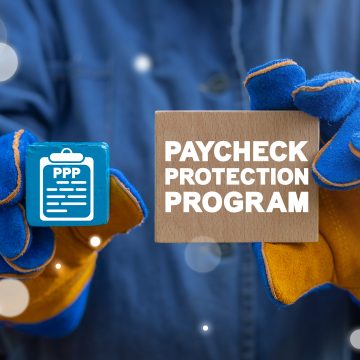In Stephen Covey’s book Habits of Highly Effective People, Habit #2 is “Begin with the End in Mind”. However, adapting that great advice to the business owner should make it Habit #1; and, for more precision, it should be modified to read “Begin with the Exit in Mind”.
Though perhaps counterintuitive, preparing a business for sale (i.e. the exit) should begin right at the time of starting, buying, or inheriting it for two principal reasons: First, it is an immutable fact of life that every business owner on the planet will eventually exit their business. It is only a question of when. Second, and more importantly, planning for that inevitable exit informs the owner how the business must be run from its beginning to the time of exit. The time of exit can be:
- Serendipitous, if driven by a life or business changing event as in the “dismal D’s” of death, divorce, disability, debt overload, declining market, or departing partner;
- Opportunistic, if in response to an unsolicited offer; or
- Strategic, if executed in accordance with the business owner’s thoughtful exit plan.
Elements of an Exit Strategy
Although life can intercede with one or more of those dismal D’s and unsolicited offers can be tempting, ideally, every business owner’s exit should be strategic with the defining exit plan needing just three distinct elements:
- A trigger such as the owner’s age, time in business, readiness of children or management to take over, achieved size or profitability of the business, or some other factor or combination thereof indicating when the exit plan will be initiated;
- A disposition of the business to be achieved via the exit plan, which could range from the simple liquidation of assets (typically the least rewarding option) to selling the ongoing business to either partner(s), children, senior management, the employees in general via an ESOP, the public via an IPO, or a third party via an M&A transaction (typically the most rewarding option); and
- The operational role and/or equity stake, if any, desired by the seller in the business post-close.
For Example…
To illustrate how an exit plan informs how the business must be run, consider two scenarios.
In scenario #1, the business owner plans to retire at age 35; completely exit the business by selling her 100% interest via a competitive process to a third party, and then use the net proceeds to support herself for the rest of her life as she works on her golf game playing on the best courses the world over. In scenario #2, the owner plans to expire at age 100 at his desk with a valid will in the upper right-hand drawer directing that the business be liquidated upon his death and that the net proceeds be used to support Brutus, his pet German Shepherd, in the style to which it has become accustomed for the rest of its natural life. The exit plan for scenario #1 informs the owner that she will likely have to grow her business very rapidly and drive its value up significantly to provide sufficient net proceeds from the sale to fund her post-close lifestyle for an actuarially long period. In turn, that may require that she make some key acquisitions along the way to complement her company’s organic growth.
The exit plan for scenario #2, on the other hand, informs that owner that he could likely maintain a no growth/slow growth strategy and still generate sufficient resources upon liquidation to take care of Brutus. In each of these scenarios, the exit plans indicated the required growth trajectories and supporting strategies needed to achieve their owners’ respective goals at the exit.
What next?
So, with an exit plan in place (and assuming liquidation is not the desired exit option!), how can business owners prepare their businesses for sale?
One way to prepare is to understand the attributes that a sophisticated buyer typically seeks in an acquisition target. The more of those attributes, as shown below, that are present, the lower will be the buyer’s purchase risk and the higher will be the valuation and price to the seller, assuming the sale is conducted in the context of a competitive process (more on this point later).
Diversified Customer Base — A rule of thumb is that a business should not have more than 10% of its sales coming from any one customer. Customer concentrations beyond that level begin to erode the valuation because of the risk associated with the loss of that one customer and the related impact on the financial health of the company.
Intellectual Property Protection — The existence of IP (e.g. copyrights, patents, trademarks, trade secrets, trade dress, licenses, engineering/architectural designs, employee assignments, etc.) strengthens a company’s valuation because it is protective of the business model. However, the valuation will hold up only if it can be demonstrated that the IP is well crafted, well managed, and well defended. This is an area that would greatly benefit from good counsel by an IP attorney.
Niche Specialty/Leadership — Being a niche leader with a strong value proposition and the associated higher margins beat being a larger purveyor of commodity products or services battling competitors based largely upon price. The reduced margin risk will be rewarded with a higher valuation.
Fiscally Clean — Complete and accurate historical and year-to-date financials with defensible adjustments thereto engender confidence, trust, and a willingness in the buyer to value and price fairly. Unburdening the balance sheet of obsolete inventory and other non-essential assets before a sale is also very helpful because it relieves the buyer from having to discover those assets in due diligence and adjust the original offer with compensating price adjustments. Additionally, empirical evidence suggests that audited financials can benefit the seller by adding as much as a .5 risk multiple to a business valuation.
Plan for Continued Growth — No one knows better than the current business owner how best to grow the business. Therefore, a going-forward business plan should always be maintained and updated. If that responsibility is left to the buyers, they will discount the valuation accordingly to compensate for their increased execution risk.
Recurring Revenue — Nothing calms the nerves of a buyer better than to see a large percentage of the P&L supported by recurring revenues (e.g. rents, royalties, maintenance contracts, service agreements, license fees, long-term supply contracts, etc.). In contrast with discrete, project-driven non-recurring revenues, which must constantly be chased anew, recurring revenues represent a reduced risk to the buyer and, hence, a higher valuation for the seller.
Strong Management Team — Companies led by the “Lone Ranger” type of business owners suffer in their valuations because too much institutional memory, customer relationships, and functional capabilities reside in one person. Businesses with strong second-tier management teams capable of running the business in the absence of the owner have lower risk and, therefore, enjoy higher valuations.
Synergies — Unlike the above attributes, synergies cannot be created in advance of a sale. Rather, they either exist or do not exist in the eyes of the buyers who generally seek synergistic acquisitions as a means of mitigating their purchase risk. It is the seller who must find the most synergistic buyer willing to pay the highest price on the best terms. That can typically be accomplished only with a broad-based outreach campaign to the universe of likely strategic and financial buyers conducted in the context of a competitive bidding process where the synergies anticipated by the buyers play a key role in generating the desired “deal heat”. By contrast, the opportunistic and all too common practice of either accepting an unsolicited offer or, conversely, of seeking an offer from only the major sector player typically results in significantly sub-optimum price and terms for the seller. That unfortunate outcome is the natural consequence of a non-competitive process, which by design is to the distinct advantage of the buyer; and one with too narrow an outreach focus, which greatly diminishes the likelihood of finding that most synergistic potential buyer who would value the seller most highly.
Giving Your Business a Facelift
Beyond accommodating the above buyer-desired attributes, sellers would be well advised to ensure their business is otherwise properly “tuned up” for sale. This can be accomplished by periodically conducting a self-directed due diligence exercise with the help of a business attorney and transaction experienced accountant using their own due diligence checklists. Such an exercise will drill down deeply and broadly to identify the business’ strengths and weaknesses from the perspective of a buyer and allow the owner time to make the necessary corrections and improvements in preparation for a sale. Remember, buyers use these same checklists to assess and value their acquisition targets.
The sale of a business is one of the most important events in the life of a business owner. It is typically the first and last opportunity to unlock and monetize the owner’s lifetime investment in the business at the highest possible price and best terms yielding the optimal return on all the years of sacrifice and hard work. Therefore, preparing for the exit to positively influence the outcome should be the first order of business for the new business owner i.e. begin with the exit in mind. If you have any questions or concerns, please contact your Carlile Patchen & Murphy business attorney today.





0 Comments